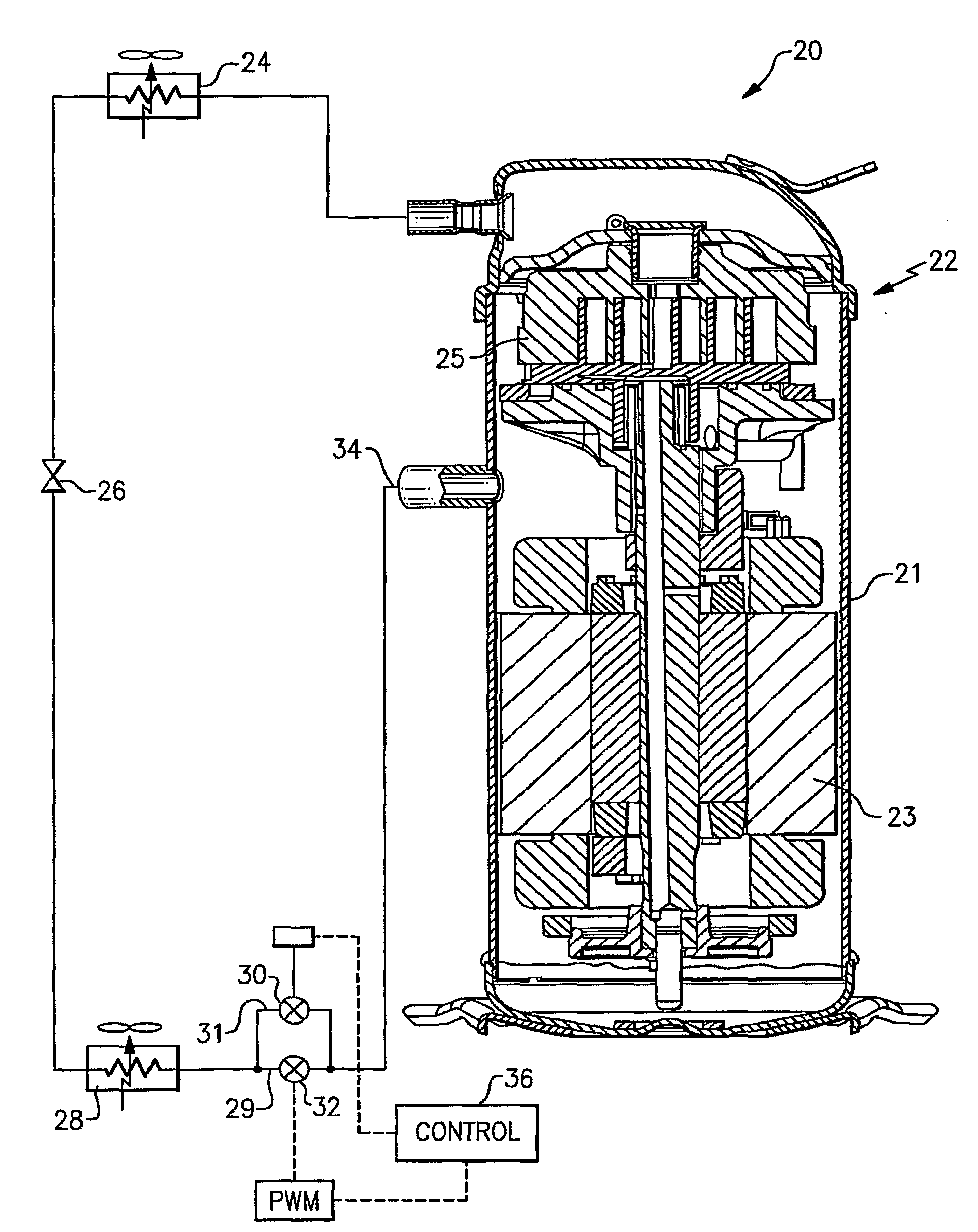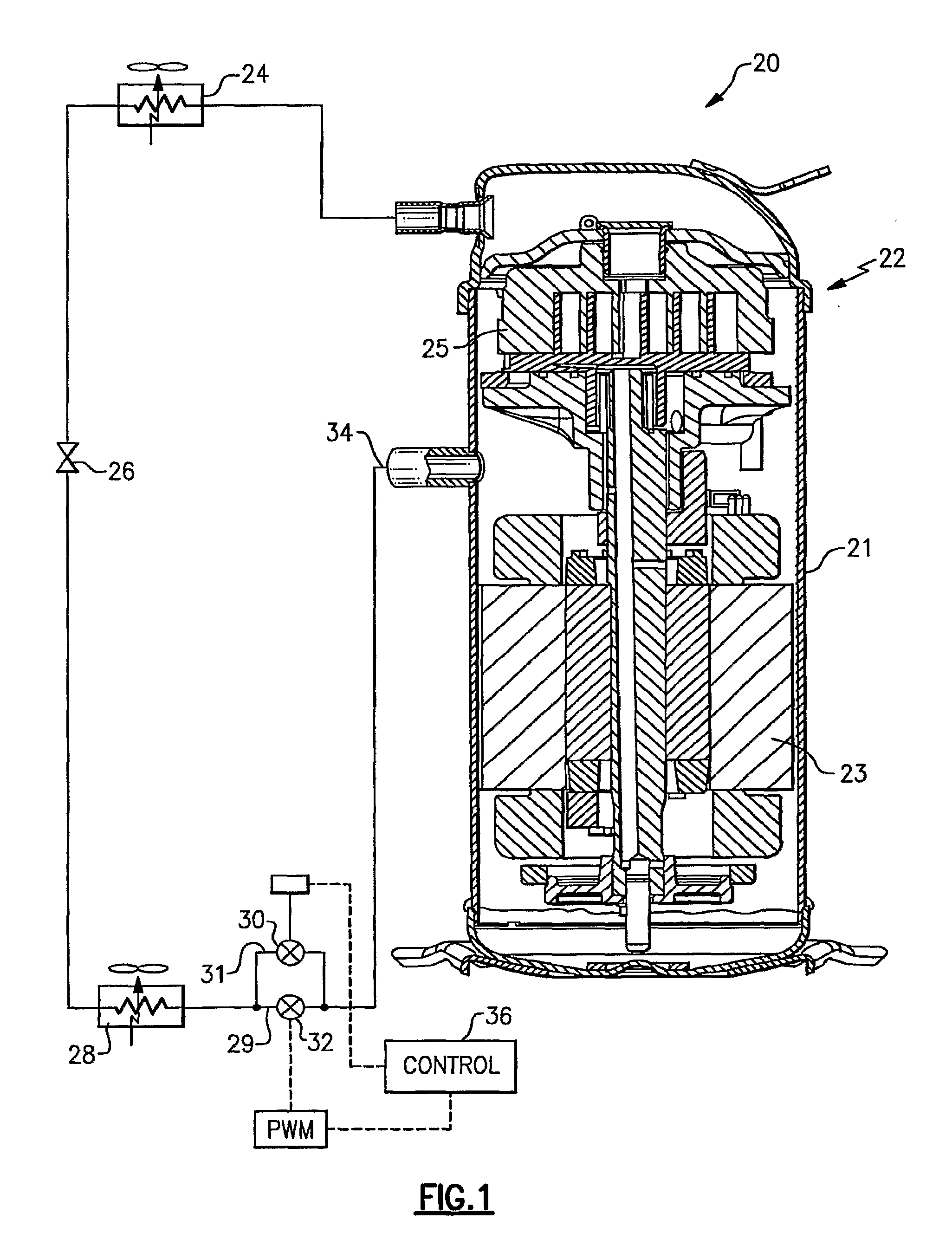Combined operation and control of suction modulation and pulse width modulation valves
a pulse width modulation and valve technology, applied in the field of refrigerant systems, can solve the problems of reducing the provided capacity and power consumption, discharge temperature exceeding the safe reliability limit, and pressure within the compressor shell may drop to an extremely low value, so as to achieve the effect of high refrigerant flow rate and lower system efficiency
- Summary
- Abstract
- Description
- Claims
- Application Information
AI Technical Summary
Benefits of technology
Problems solved by technology
Method used
Image
Examples
Embodiment Construction
[0011]A refrigerant system 20 is illustrated in FIG. 1 having a sealed compressor 22. As is known, an electric motor 23 drives a compressor pump unit 25 to compress a refrigerant. As is mentioned above, the electric motor 23 can experience harmful “corona discharge” effects should the suction pressure within the shell 21 of the compressor 22 decrease to an unacceptably low level.
[0012]The refrigerant compressed by the compressor 22 passes downstream to a heat exchanger 24, which is typically operating as a condenser. Refrigerant having passed through the heat exchanger 24 passes downstream to an expansion device 26, and then to another heat exchanger 28, which is typically operating as an evaporator.
[0013]Downstream of the evaporator 28, the refrigerant branches into a main flow line 29 and an auxiliary flow branch line 31. The main flow line 29 passes through a pulse width modulation controlled valve 32, and returns to a suction inlet 34 of the compressor 22. Refrigerant, passing t...
PUM
 Login to View More
Login to View More Abstract
Description
Claims
Application Information
 Login to View More
Login to View More - R&D
- Intellectual Property
- Life Sciences
- Materials
- Tech Scout
- Unparalleled Data Quality
- Higher Quality Content
- 60% Fewer Hallucinations
Browse by: Latest US Patents, China's latest patents, Technical Efficacy Thesaurus, Application Domain, Technology Topic, Popular Technical Reports.
© 2025 PatSnap. All rights reserved.Legal|Privacy policy|Modern Slavery Act Transparency Statement|Sitemap|About US| Contact US: help@patsnap.com


